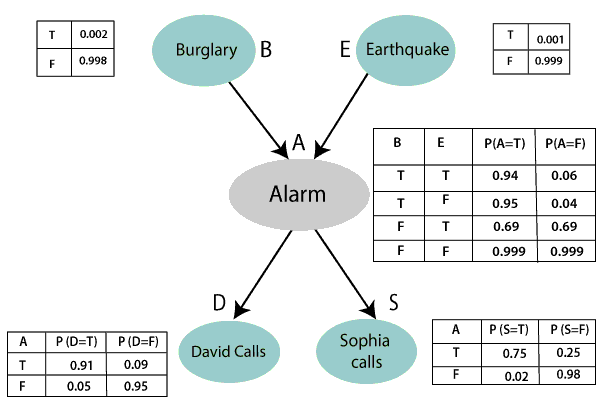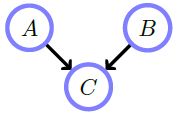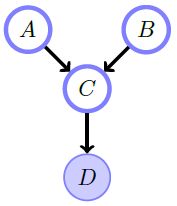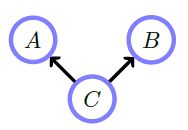Math and science::INF ML AI
Belief networks: independence examples


1 a) Marginalizing over \( C \) makes \( A \) and \( B \) [...]
1 b) Conditioning on \( C \) makes A and B [...]

2. Conditioning on \( D \), a descendent of a collider \( C \) makes \( A \) and \( B \) [...]

3 a) \( p(A, B, C) = \) [...]
3 b) Marginalizing over \( C \) makes \( A \) and \( B \) [...]
3 c) Conditioning on \( C \) makes \( A \) and \( B \) [...]
Finally, these following graphs all express the same conditional independence assumptions.

